Optimal dispatching strategy for residential demand response considering load participation
Xiaoyu Zhou,Xiaofeng Liu,Huai Liu,Zhenya Ji,Feng Li
1.School of Electrical and Automation Engineering,Nanjing Normal University,Nanjing 210023,P.R.China
Abstract: To facilitate the coordinated and large-scale participation of residential flexible loads in demand response (DR),a load aggregator (LA) can integrate these loads for scheduling.In this study,a residential DR optimization scheduling strategy was formulated considering the participation of flexible loads in DR.First,based on the operational characteristics of flexible loads such as electric vehicles,air conditioners,and dishwashers,their DR participation,the base to calculate the compensation price to users,was determined by considering these loads as virtual energy storage.It was quantified based on the state of virtual energy storage during each time slot.Second,flexible loads were clustered using the K-means algorithm,considering the typical operational and behavioral characteristics as the cluster centroid.Finally,the LA scheduling strategy was implemented by introducing a DR mechanism based on the directrix load.The simulation results demonstrate that the proposed DR approach can effectively reduce peak loads and fill valleys,thereby improving the load management performance.
Keywords: Residential demand response;Flexible loads;Load participation;Load aggregator
0 Introduction
In response to the goal of “carbon peaking and carbon neutrality” [1,2] and to achieve low-carbon transformation of electricity,China has proposed a new power system led by renewable energy sources [3-5].Although renewable energy sources can provide abundant power,they also impose a huge regulatory burden on new power systems.Demand response (DR) can flexibly dispatch demand-side resources,exploit their regulation potential,and effectively relieve the pressure on grid supply and demand.In the current environment,DR should be promoted on a large scale so that it attains the required scale and normalization characteristics.
A load aggregator (LA) [6-10] can integrate scattered demand-side resources for unified regulation and is the key to conducting the DR business [11,12].In terms of demandside resources,the proportion of electricity consumption by residential users is increasing,which significantly enhances their DR potential.Because residential energy consumption has the characteristics of a small single load,scattered distribution,and low efficiency [13],LAs can be employed to integrate the flexible load resources of residential users and realize a unified regulation of these users [14].
A remarkable amount of research on DR has been conducted by interested parties regarding the participation not only of commercial [15-18] but also residential flexible loads.Reference [19] established a mixed-integer load model for the complex electricity consumption of a user.The authors in [20] analyzed and profiled multiple purposes using a new method based on a hidden Markov model [21]and a time-varying Markov chain.A scalable machine learning framework was investigated in [22] to infer the time-of-use price mechanism from the energy load shapes of a collection of residential buildings.The above research mainly concentrated on energy consumption scheduling and neglected the participation of residential users from the aspect of loads.DR performance is significantly affected by load participation,whereas load participation is influenced by many factors,such as the type of flexible load [23],operating conditions of the equipment,and related parameters,which show differences in terms of their electric performance,dispatchable potential[24,25],and response behavior [26].By studying the degree of participation of flexible loads,the influence of load types and physical characteristics of the equipment can be considered comprehensively,which is conducive to accurately determining the DR potential and formulating more flexible and reasonable scheduling strategies [27].Therefore,this study mainly focuses on the optimal dispatching strategy for residential DR,including an analysis of load participation.The main contributions of this study are as follows∶
(1) A residential DR mechanism was proposed based on load participation to maximize the benefits of the LA and enhance load management performance.
(2) Considering the operational characteristics of electric vehicles (EVs),air conditioners (ACs),and dishwashers(DWs),DR participation models of flexible loads were established to accurately capture the ability of the loads to participate in DR.
(3) The massive flexible loads were clustered using the K-means clustering algorithm,and the cluster centroid was formulated based on the operational characteristics of the loads.
The remainder of this paper is organized as follows.The proposed DR scenario is described in Section 1.Section 2 describes the establishment of the DR participation model.Section 3 focuses on load clustering.The LA scheduling strategy is described in Section 4.The simulation results are presented in Section 5.Section 6 summarizes the study.
1 Proposed demand response scenario
The scenario proposed in this study is illustrated in Fig.1,where the LA exchanges information with the grid dispatch center and the residential side.The grid dispatch center is responsible for setting and broadcasting the directrix load to the DR market.The directrix load can be understood as an ideal load curve that can effectively suppress fluctuations on the demand side [28].Upon receiving the directrix load,considering both the load physical characteristics and user demand,the LA calculates the participation degree of flexible loads and schedules the loads with a high participation degree as a priority to fit residential loads to the directrix load.During the entire DR process,LAs obtain the economic payoff from the grid dispatch center via the DR market,whereas residential users can obtain economic compensation from the LA.In this scenario,three types of flexible loads are involved in DR∶
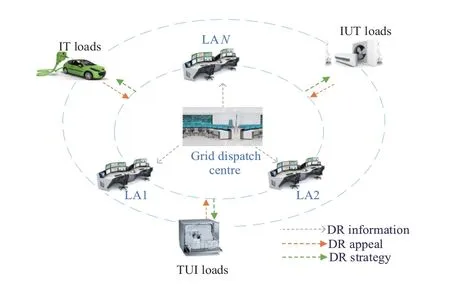
Fig.1 Demand response (DR) scenario including the grid dispatch center,load aggregators (LAs),and flexible loads
(1) Interruptible–transferable (IT) loads [29],such as those of EVs,have the flexibility to charge at different times and can be controlled to participate in DR by considering only the energy required to travel the next day.
(2) Interruptible–untransferable (IUT) loads,such as ACs,can be interrupted during operation,and energy consumption can be reduced by adjusting the set temperature without affecting user satisfaction.
(3) Transferable–uninterruptible (TUI) loads,such as DWs,can be shifted from peak load hours to off-peak hours based on the preferred operation time period of users.
2 Demand response participation of flexible loads
The different types of flexible loads that can participate in DR have several common characteristics [30].These loads can reduce or shift their energy demand,whether in the form of electricity,cooling,or heating.This allows them to contribute to energy regulation without negatively impacting user satisfaction while also offering scheduling flexibility.In this section,to evaluate the DR capability of these loads,they are conceptualized and modeled as virtual energy storage.It is important to note that the virtual energy storage does not have the physical ability to store energy,particularly in the case of appliances such as ACs and DWs.However,when these loads participate in DR,their energy demand can be regarded as the capacity of the virtual energy storage.The magnitude of their energy demand directly corresponds to the capacity of the virtual energy storage,which ultimately affects the DR capability of these loads.The LA can determine the load participation based on the aggregated energy storage state during each time slot and calculate the compensation price issued to users based on the deviation in load participation at different time slots.
2.1 Participation characteristics of interruptible–transferable (IT) loads
IT loads can be both interruptible and transferable,as those of EVs.EVs are generally charged between the end of a day’s travel and the following day’s travel.As the charging time is shorter than this period,the loads can choose whether to charge at any point during that period.Therefore,the participation characteristics of EVs are primarily related to their charging requirements.The charging demand of an EV is influenced by the time of connection to the gridt1,in,time of disconnection from the gridt1,out,and initial state of charge when the EV begins to charge.The switching state iss1,t=0 when the EV is not charged,ands1,t=1 when the EV is charged.
The remaining energy at the moment the EV is connected to the grid can be expressed as
whereED1is the energy capacity of the EV and 0≤Soc0≤1 isthe initial state of charge.
To minimize the impact of DR on users,it is essential to ensure that the energy stored in the EVs is sufficient to meet their travel demands once they have been disconnected from the grid.It is assumed that the energy of the EV before leaving is
whereSoc0<Socout≤ 1 is the final state of charge as the EV disconnects from the grid.
The energy constraint needs to be satisfied during time slott+1∶
wherePevis the EV charging power;E1,tis the energy in EV’s storage during time slott.Basically,E1,out-E1,inrepresents the total energy demand of the EV,which can be regarded as the capacity of the virtual energy storage.E1,t-E1,inrepresents the stored energy in the storage.Therefore,the DR participation of IT loads can be quantified using the ratio of residual storage space.That is,
whereω1,tis the DR participation of IT loads during timeslott.Accordingly,the deviation in the load participation for IT loads during timetcan be expressed as
The DR amount and time period for IT loads can be expressed as
2.2 Participation characteristics of interruptible–untransferable (IUT) loads
For most IUT loads,temperature control devices possess thermodynamic characteristics,and temporary interruptions do not affect the user.Taking AC as an example,its operating status is related to the room temperature,AC temperature-setting value,and other factors.In this study,we assumed that the AC operated in cooling mode.The thermodynamic model of the room-temperatureTinat timetis given by
The relationship between the AC on/off status and room temperature is
whereTin,tis the indoor temperature at timet,Ris the equivalent thermal resistance,Cis the equivalent heat capacity,Ta,tis the outdoor temperature at timet,Qis the AC cooling capacity,Pacis the AC rated power,andθis the energy efficiency ratio.
The room is considered as an equivalent energy storage model,and the internal energy of the air inside the house is considered as stored electric energy.The temperature difference between the indoor and outdoor environments causes the cooling capacity (equivalent to the capacity of the virtual energy storage) to be dissipated,and the discharge rate is determined by the heat exchange power.When the temperature increases to the upper temperature limit,the power storage is 0.When the AC cooling reduces the indoor temperature,the internal energy decreases,resulting in an increase in the stored energy.When the temperature decreases toTmin,the corresponding storage energy isE2,max.Accordingly,the energy storedE2,tin the room at timetcan be expressed as
The constraint of the virtual energy storage is satisfied at timet+1∶
The DR participation of the AC can be measured using the energy storageE2,t.When the indoor temperature is lower than the user’s set value,the energy storage increases.Consequently,user willingness to participate in DR is enhanced.Therefore,the DR participation of the IUT load is expressed as
Accordingly,the deviation in load participation during timetfor the IUT load can be expressed as
The DR amount and time period for the IUT load can be expressed as
2.3 Participation characteristics of transferable–uninterruptible (TUI) loads
The TUI load cannot be switched off once it is turned on,and the participation is mainly affected by time.Taking the DW as an example,it is specified that the load is connected to the grid at timet3,inand is disconnected from the grid at timet3,out,its rated power isPdw,and the operation period isK.Then,the switching states3,tof the DW at timetis
Moreover,the following constraints about a TUI load have to be satisfied∶
Load operation cycle constraint∶
Cumulative running time at timet∶
Uninterruptible constraint∶
Constraint of the virtual energy storage at timet+1∶
Equivalent energy storage constraint at the end time∶
whereKsum,tis the accumulated running time at timetandED3is the capacity of the virtual energy storage.
Because the TUI load participation is affected by the operation time,this load does not participate in the DR after it starts working.Furthermore,the load participation before operation is related to the load operation cycle.The TUI load participation can be expressed as follows∶
To harmonize the models of IT and IUT loads,the equivalent virtual energy storageE3,tis employed to measure participation.The expression of (22) can be rewritten as
Accordingly,the participation deviation of TUI loads is
The DR amount and time period for TUI loads can be expressed as
3 Clustering model of flexible loads
Considering the large flexible loads on the residential side,it is difficult for the LA to schedule each flexible load.To reduce the difficulty of regulation,it is necessary for the LA to cluster the loads based on their characteristics.By clustering loads with similar characteristics,the LA can schedule them uniformly,thereby reducing the complexity of LA regulation and ensuring the DR potential of users.In this section,the IT,IUT,and TUI loads were aggregated using the k-means algorithm with the cluster centroids illustrated in Fig.2.
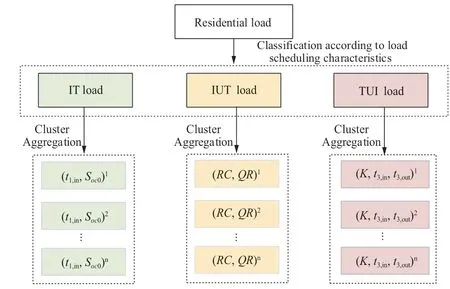
Fig.2 Clustering process of flexible loads
(1) Cluster centroid of IT loads
For the IT loads of EVs,the attributes of users are mainly reflected in their personal characteristics and travel needs.The personal characteristics of the user can be described by the time of connection to the gridt1,in.The EV’s initial state of charge is related to the daily driving mileage and road congestion.If the user has a high daily travel demand,the initial energy state of the EV is low when connected to the grid.Therefore,a user’s travel needs can be described by the initial state,Soc0.Essentially,(t1,in,Soc0) is selected as the cluster centroid of the EV,and the number of categories is set tok1.The load participation and load participation deviation of the EVs after clustering are given as follows∶
whereω1,j,tis the load participation of classjduring timeslottfor IT loads,ED1,jis the total energy capacity of classj,andE1,j,tis the energy of classjat timet.
(2) Cluster centroid of the IUT loads
The thermodynamic parameter equations of ACs are closely related to the temperature variation parameterRCand the characteristic temperature differenceQR.The values ofRCandQRcan be obtained using parametersQ,R,andC.According to the cluster centroid (RC,QR) and the number of categoriesk2,the ACs can be classified into different aggregation groups.The load participation and load participation deviation of the ACs after clustering are given as follows∶
whereω2,j,tis the load participation of classjduring timeslottfor IUT loads,E2,max,jis the maximum energy capacity of classj,andE2,j,tis the energy capacity of classjat timet.
(3) Cluster centroid of the TUI loads
For the TUI loads of DWs,the behavioral characteristics of users are mainly reflected in the consumption time,including the load operation periodK,time of connection to the gridt3,in,and time of disconnection from the gridt3,out.Therefore,the cluster centroid of the DW is selected as(K,t3,in,t3,out),and the number of categories isk3.Similarly,the load participation and load participation deviation of the DWs after clustering are given as follows∶
whereω3,j,tis the load participation of classjduring timeslottfor TUI loads,andED3,jis the total energy capacity of classj.
4 Load aggregator scheduling strategy based on load participation
In a novel power system characterized by a substantial reliance on renewable energy sources,the grid dispatch center calculates the directrix load and DR amount,considering the controllable energy generation,renewable energy,and energy demand.The directrix load is the contour shape of the ideal load curve that can smooth out the fluctuations caused by non-regulated resources such as renewable energy and rigid loads in the power system.The extent to which a load curve involved in DR resembles the directrix load determines its contribution to the regulation of the power system.To quantitatively measure the similarity between these curves,a similarity index is introduced that serves as a metric to assess the actual impact of users in responding to the directrix load.A higher index value indicates a better fit between the two curves.The similarity index can be expressed as follows∶
whereD∈(0,1] is the similarity of the directrix load,is the directrix load,is the per-unit value of the load curve after the actual DR,εis the given constant value,λis the total energy during the time periodT,andLtis the load at timet.
By setting different compensation prices for users,priority dispatching of loads with high participation can be realized.Therefore,the energy consumption satisfaction of the user after participating in DR can be ensured without being excessively affected.In the scenario set up in this study,the market price was related to the similarity indexD.For a high value ofD,the load curve has a high similarity with the directrix load,and the DR market price will be at a high level.The compensation price is related to the load participation and participation deviation.The greater the load participation,the higher is the probability of user participation in DR without the need for economic compensation to attract users.This indicates that the compensation price can be set at a low level.The smaller the participation deviation,the less likely that users will change their original energy consumption habits.To obtain a load curve that approximates the directrix load,it is necessary to raise the compensation price to increase the user’s willingness to participate in DR.To maximize self-profit,the LA optimizes the following objective function to schedule the energy consumption of flexible loads in the DR process∶
whereWis the profit of LA;ptis the DR market price at timet;at,btare the parameters of market price;li,j,tis the load reduction of classjfor loadiat timet;ci,j,tis the compensation price for classjof loadi;andQi,j,t(i=1,2,3)represents the DR amount of classjfor loadiat timet.
5 Simulation analyses
5.1 Simulation parameters
It was assumed that 10,000 residential users participated in the DR in an area.Each user had three types of flexible loads (i.e.,EVs,DWs,and ACs) involved in the DR.In this case,we assumed that DR is conducted from 18∶00 to 6∶00 on a typical summer day,and the dispatch interval is 15 min.Additionally,the market price parameters were set asat=80 yuan/MWh andbt=320 yuan/MWh.The parameters related to the characteristics of energy consumption behavior and flexible loads are listed in Tables 1–3.

Table 1 Parameters related to EV loads

Table 2 Parameters related to AC loads
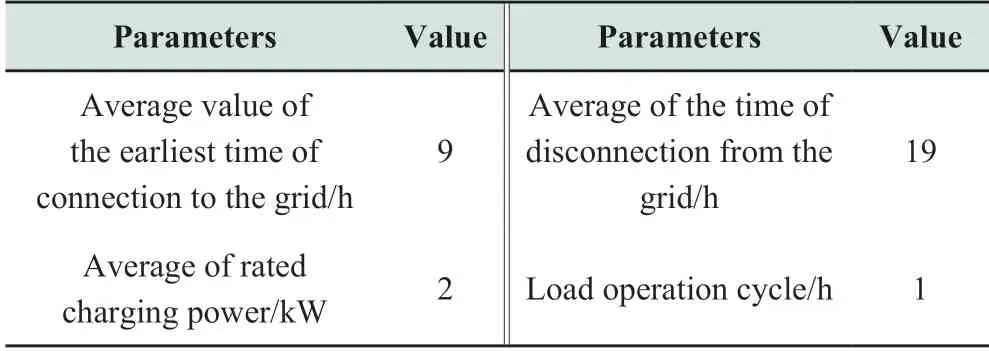
Table 3 Parameters related to DW loads
5.2 Analysis of clustering result
The clustering results of each flexible load are shown in Figs.3–5,where differently colored areas represent different clustering categories,and the fork indicates the cluster centroid.Considering the first clustering area as an example,the EV clustering results are shown in Fig.3.The clustering characteristics reflected by the centroid indicate that the EV starts charging at 20∶15 and the initial state of charge isSoc0=0.45.The clustering results of the ACs are shown in Fig.4.The clustering features reflected by the centroid show that the temperature variation of the ACs isRC=1.15,and the characteristic temperature difference isQR=6.75.The clustering results for the DWs are presented in Figs.5(a) and (b).The clustering characteristics reflected by the centroid show that the earliest DW is connected to the grid at 8∶15,the latest time it leaves the grid is 20∶45,the energy consumption time is 1 h,and so on,for all other regions.
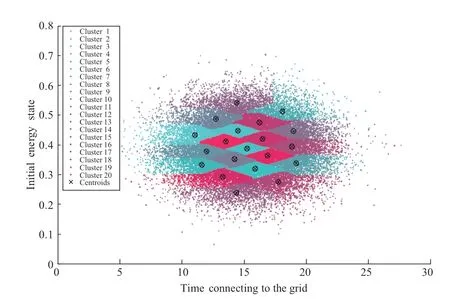
Fig.3 Clustering result of electric vehicles
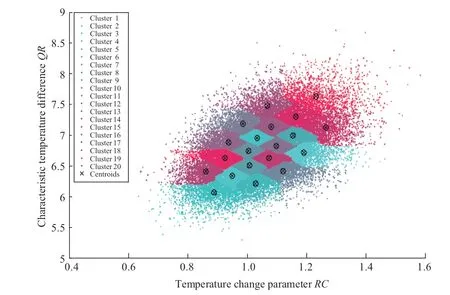
Fig.4 Clustering result of air conditioners
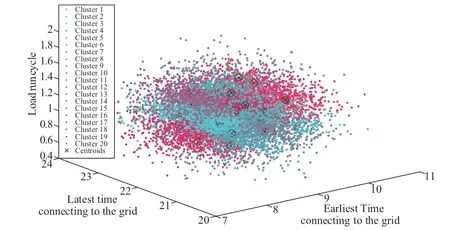
Fig.5(a) Clustering result of dishwashers
5.3 Analysis of dispatching result
Based on the above analysis,the grid dispatch center broadcasts the directrix load to all the LAs in the DR market.After receiving the information,the LA determines the DR amount according to the directrix load.Then,it controls the loads of residential users to adjust their energy consumption as much as possible to improve the similarity between their load curve and similarityD.Taking the IT loads as an example,Fig.6 shows the optimal dispatching load curves for different values ofD.As can be observed,the DR performance improves with an increase inDvalue.
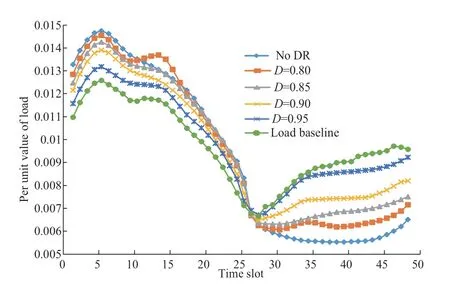
Fig.6 Optimal scheduling curves for different D values
The load curve after participating in the DR can be obtained by scheduling the operational state of all residential loads,as shown in Fig.7.Compared to the original load without DR,the total load after participating in DR was significantly reduced during the peak period,whereas the load increased during the valley period.This demonstrates that flexible loads can play a very effective role in peak shaving and valley filling after participating in DR.

Fig.7 Load of power grid
The contributions of each load type are shown in Fig.8.The high energy demand of EVs shifted from time slots 1–24 to 25–48.Therefore,EVs have a positive effect on both peak shaving and valley filling.The energy demand of ACs is directly reduced during time slots 1–24,with a large reduction.This demonstrates that ACs play an important role in peak shaving.For the DWs,the energy demand shifts from time slots 12–21 to 22–24,but the reduction is small.Compared with EVs and ACs,DWs have less effect on DR performance,mainly because of their energy consumption and operation characteristics.
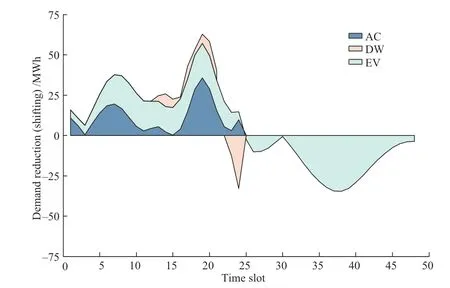
Fig.8 Demand reduction (shift) of flexible loads
5.4 Analysis of economic benefit
Under the premise of considering parameter variability,the numerous users were divided into different load groups in which the user load participation was highly similar within a group,but there were large differences between different groups.To improve the profits of the LAs and take into account the heterogeneity of load groups,the compensation prices of all groups were also different,as listed in Table 4.
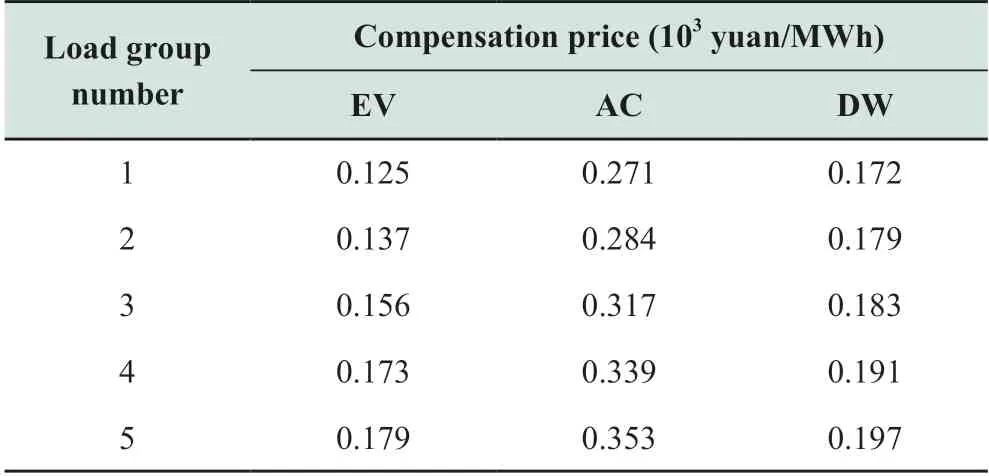
Table 4 Compensation prices for different types of loads
Furthermore,to verify the DR effect of the scheduling strategy that considers directrix load–DR,two scenarios were introduced∶ DR was performed using the proposed DR mechanism in Scenario 1,whereas in Scenario 2,shiftable loads were scheduled without considering the directrix load.A comparison of the results is presented in Table 5.The results show that the DR performance in Scenario 1 was better than that in Scenario 2.It demonstrates that DR with directrix load can adjust residential loads to fit the ideal load curve,which is more conducive to exploring the DR potential in the residential side and facilitating the normalization of residential DR.The average load rateγand load shiftable rateµindices are defined as follows∶
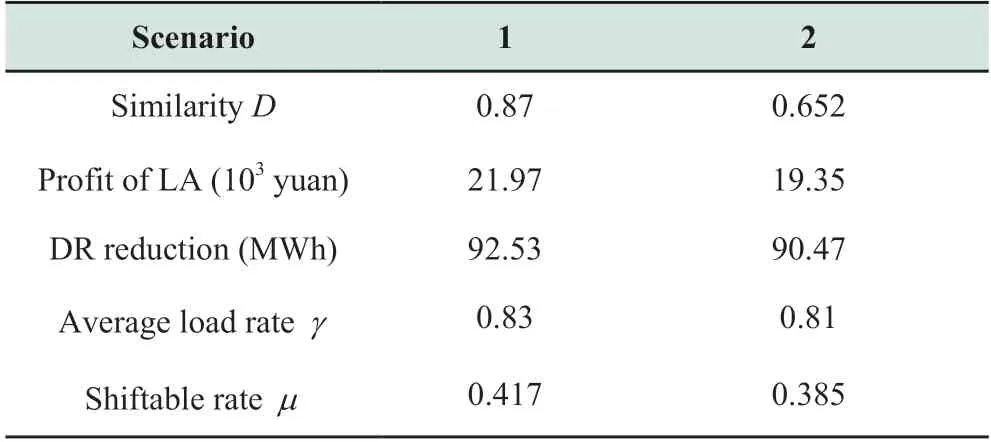
Table 5 Optimal results in Scenarios 1 and 2
6 Conclusion
To maximize the DR potential on the residential side,this study proposes an optimal scheduling strategy for flexible loads by considering the degree of load participation.A load participation degree model was constructed considering the operational characteristics of flexible loads,including EVs,DWs,and ACs.A large number of flexible loads were clustered and aggregated according to their operational characteristics.Finally,by introducing a directrix load–DR mechanism,flexible loads were scheduled to fit the ideal load curve.The main research results are as follows∶
(1) An optimal scheduling strategy for residential DR was developed by considering the load participation degree,and the compensation price was determined taking into account the load participation degree and load participation degree deviation.
(2) The proposed scheduling strategy can effectively guide load shaping and reduce the peak-to-valley difference in the load.It has thus a significant effect on peak shaving and valley filling.
Acknowledgements
This work was supported by the Basic Science (Natural Science) Research Project of Jiangsu Higher Education Institutions (No.23KJB470020) and the Natural Science Foundation of Jiangsu Province (Youth Fund) (No.BK20230384).
Declaration of Competing Interest
We declare that we have no conflict of interest.
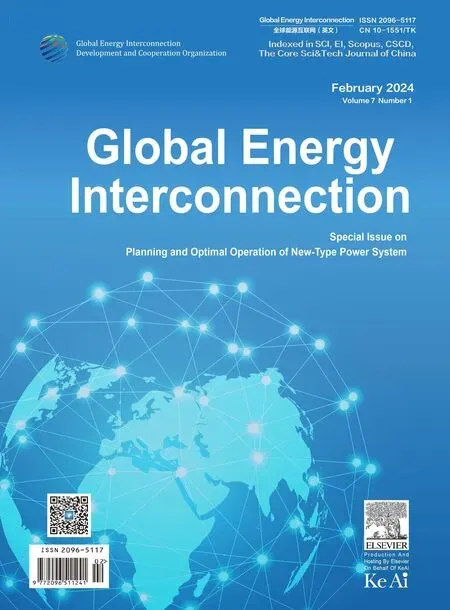 Global Energy Interconnection2024年1期
Global Energy Interconnection2024年1期
- Global Energy Interconnection的其它文章
- Double-ring high-frequency common-mode switching oscillation current sensor for inverter-fed machine winding insulation monitoring
- Multi-source heterogeneous data access management framework and key technologies for electric power Internet of Things
- A digital twin model-based approach to cost optimization of residential community microgrids
- Integrated strategy for real-time wind power fluctuation mitigation and energy storage system control
- Optimal operation of Internet Data Center with PV and energy storage type of UPS clusters
- Optimal scheduling of a township integrated-energy system using the adjustable heat-electricity ratio model
